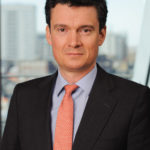High-quality primary managers are beginning to use the secondaries market to manage their assets, ushering in a “third wave” of direct secondaries, according to investment bank Lazard.
Deals involving portfolios of direct assets and single-asset direct transactions increased last year, and established large-cap managers ran such processes to manage their portfolios or subsets of underlying companies for the first time, Lazard wrote in its end of year market review, obtained exclusively by Secondaries Investor. The firm expects this trend become a “new normal”.

“The third wave of the established players using the secondaries market for their older-vintage funds should now really come of age and hit this year,” Pablo de la Infiesta, European head of the firm’s private capital advisory group, told Secondaries Investor. “We’ve seen a couple of anecdotal events and transactions in that space already, one of which was Bridgepoint where they sold a combination of company stakes from one of their older funds. That’s a deal in that direction.”
De la Infiesta was referring to London-headquartered buyout firm Bridgepoint‘s sale of stakes in at least four portfolio companies held in its 2005-vintage fund to HarbourVest Partners in the first half of 2016, with Compass Partners International helping to manage the assets.
Direct secondaries’ first wave involved a high number of spin-outs, and its second wave has been characterised by independent managers who have not raised successor funds post-crisis using the market to renew their investor base. A lot of the deals made in the two initial waves ended up including a stapled primary component, de la Infiesta explained
The definition of secondaries is also expanding, with annex fund commitments, preferred security investments, structured direct investments and other alternative investments being some of the tools secondaries market participants implemented during 2016, according to Lazard’s review.
Annex fund deals, where GPs raise capital for investing in an existing pool of assets, include First Reserve seeking a reported $300 million last year to invest alongside its 2008-vintage First Reserve Fund XII, and TDR Capital raising €835 million of expansion capital from Landmark Partners to invest alongside its 2007-vintage TDR II.
Other examples include London family office Disruptive Capital Finance, which raised £80 million ($97 million; €92 million) through a semi-stapled deal to invest in its own existing portfolio of companies, and Paris-listed Eurazeo, which said last week it had raised €500 million in third-party capital to invest in a portfolio of its own existing assets.
Such deals can be considered secondaries because investors evaluate existing assets and are gaining exposure to an already-funded situation, according to de la Infiesta.
“It’s not a blindpool they’re investing in, they’re investing in companies, they’re making a judgement call on the value of those companies before doing the deal,” he said.
Lazard’s review also noted the following:
- Deal volume for 2016 will be lower than the previous year, and a perceived lack of attractive investment alternatives kept many potential sellers from launching sale processes
- Infrastructure secondaries will hit a $4.5 billion record high for 2016 deal volume, up from $3 billion
- Average pricing for all asset classes was 90 percent of the latest reported net asset value on an all-cash basis, down from 92 percent in 2015
- Average loan-to-value ratios decreased in 2016 from 50 percent in many transactions the previous year, contributing to the slight drop in pricing
- Dry powder sits at around $105 billion, exceeding the expected volume of deals by three times; this will contribute to a “seller-friendly” environment
- US public pensions will return as sellers in 2017






 If you do not receive this within five minutes, please try to sign in again. If the problem persists, please email:
If you do not receive this within five minutes, please try to sign in again. If the problem persists, please email: